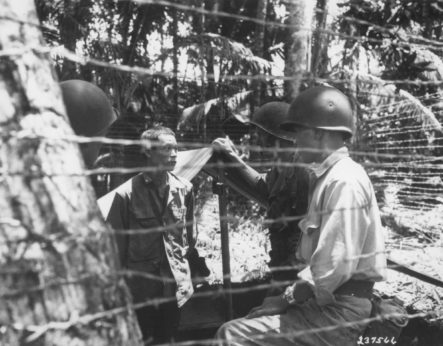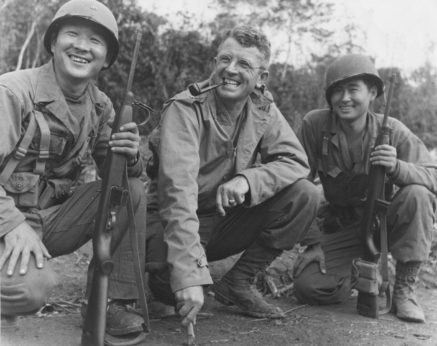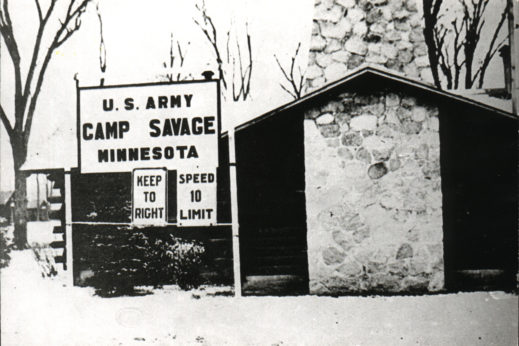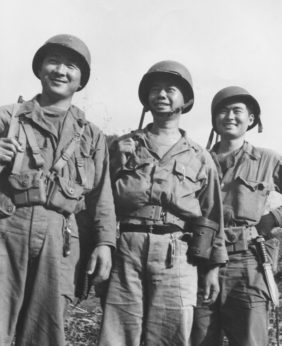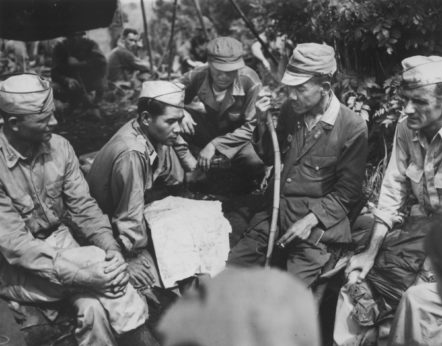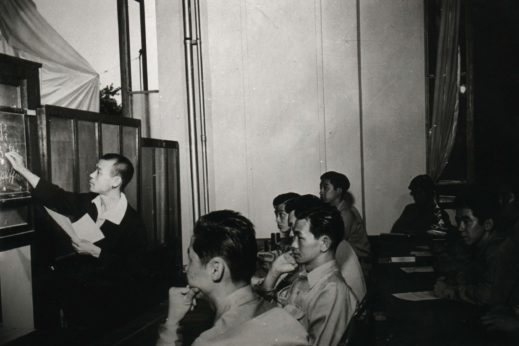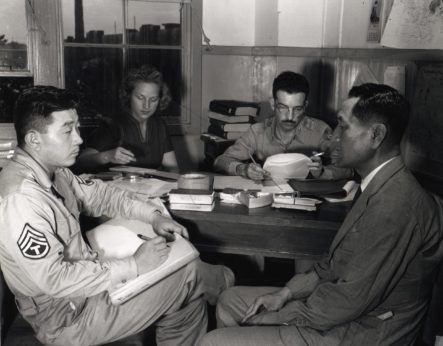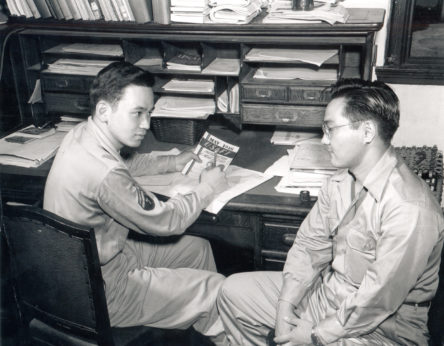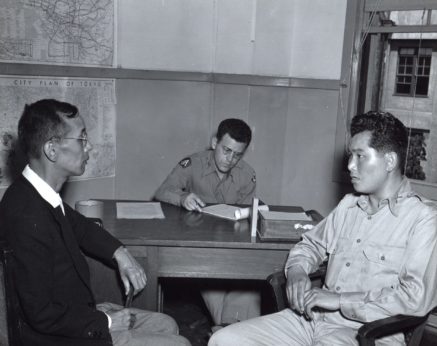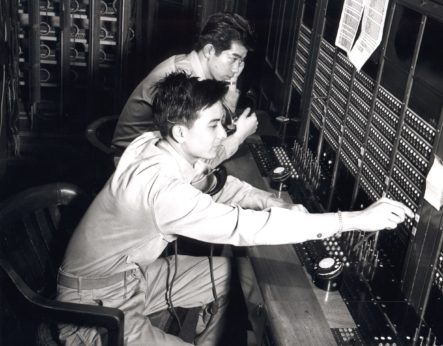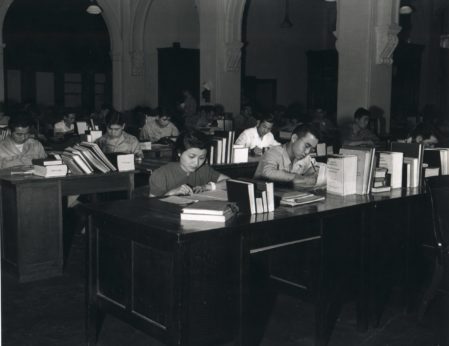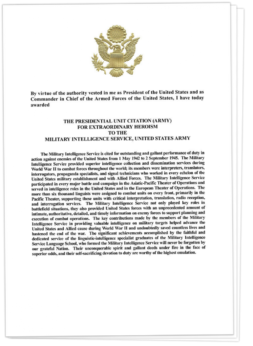The War Years (1941 – 1946): Serving the U.S.
Military Intelligence Service
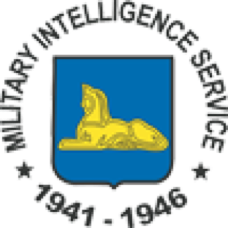
During World War II, second-generation Japanese Americans (Nisei) served in the Military Intelligence Service (MIS), performing secret intelligence work against the Japanese military. Their work dispelled any doubt that, as Americans, they were willing to fight an enemy with whom they shared ancestry.
On November 1, 1941, the U.S. Army opened a MIS Language School at the Presidio in San Francisco. The secret mission: to teach the Japanese language to military intelligence personnel in the event of war with Japan. Following the outbreak of World War II, Japanese Americans with the required language background were recruited from the 100th Battalion, 442nd RCT, and from Hawaii and America’s camps. In all, 6,000 Nisei graduated from military language schools at the Presidio, and at Camp Savage and Fort Snelling in Minnesota.
The MIS graduates were dispatched to every combat theater and participated in every major battle and invasion against the Japanese military. They were attached to the U.S. Army, Navy, Marines and Air Corps and ‘loaned’ to British, Australian, Canadian, New Zealand, Chinese and Indian combat units in every phase of the Asia- Pacific war until Japan was defeated.
For these men, it is hoped, there will be waiting here no second-class citizenship or social or economic discrimination. For they and the families from which they came are first-class citizens in every sense. They won that honor the hard way – with blood, sweat and tears. They are men of whom the whole United States should be proud.
New York Times editorial, July 4, 1946
Beginning in May 1942, MIS participated in:
- The Aleutian and Solomon Islands invasions
- The drive through New Guinea and the Philippines
- The Central Pacific invasions of Tarawa, Kwajalein, Majuro, Eniwetok, Saipan and Guam
- The final assault on Iwo Jima and Okinawa
- Reopening the Burma Road to China
The Nisei linguists:
- Translated enemy documents, including orders, battle plans, maps, diaries and letters
- Interrogated Japanese Prisoners of War
- Served undercover in Japan-occupied Manila
- Served as order-of-battle specialists
- Intercepted and deciphered enemy communications
- Composed and broadcast surrender appeals and other psychological warfare tactics
- Flushed caves of enemy soldiers and civilians
They gathered volumes of intelligence in the process, which were used to develop successful Allied strategies and operations against the Japanese.
Nisei served in front line combat units and were awarded the Combat Infantryman’s Badge. They fought as ferociously against the Japanese as the 100th Battalion and 442nd Regimental Combat Team fought in Italy and France.
When the Pacific war ended, they helped demobilize Japanese armed forces and create an industrialized Japan allied to the United States. An additional 3,000 Nisei linguists served in the Occupation of Japan in various capacities. They helped write Japan’s Constitution and aided in reform movements involving education, politics and women’s rights.
With their knowledge of the Japanese language and customs, the Nisei served as a bridge between the Japanese officials who did not speak English and the American officials who did not speak Japanese. Until recently, very little was known about the invaluable service provided by the Nisei of the MIS, primarily because their work was strictly classified.
The Nisei who served in the MIS were America’s secret weapon in the war against Japan. MG Charles Willoughby, G-2 Chief in the Pacific, credited them with saving a million lives. In 2000, the MIS earned their Presidential Unit Citation for extraordinary heroism in military operations against an armed enemy.
Edited From “Japanese Eyes, American Heart” 1998. Reprint Approved By Ted Tsukiyama, Esq.

